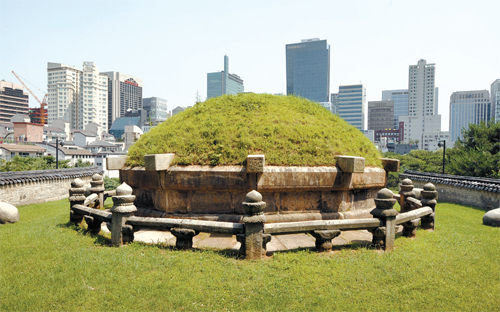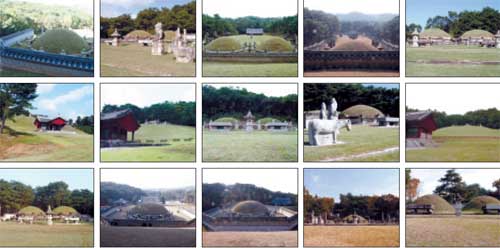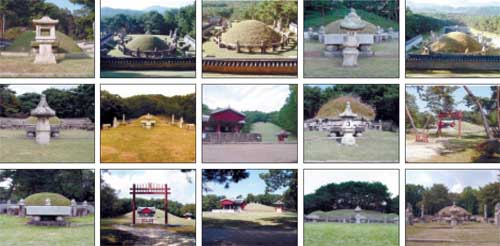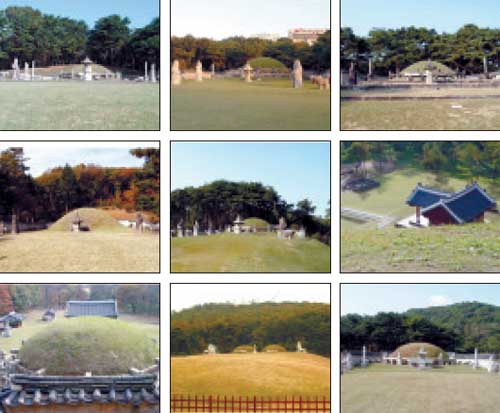Joseon tombs win heritage status from Unesco

Jeongneung, the tomb of Joseon’s 11th king Jungjong, in Samseong-dong, Seoul, is one of the 40 ancient royal tombs in the country that were granted World Heritage status by Unesco. The thumbnail photos of the rest 39 are shown above. [NEWSIS, YONHAP]
What the Unesco committed singled out for attention was the unique architecture and landscape of the tombs plus the fact that intangible assets such as rituals had been passed down through the generations, the administration said.

“The committee concluded that the sites along with the beautiful scenery in the surroundings create a solemn atmosphere and reveal an important step in the development of tombs and ancestral rituals in East Asia,” the Korean National Commission for Unesco said in a statement.
The 40 tombs now on on Unesco’s World Heritage List belong to kings and queens of the Joseon Dynasty (1392-1910) and are located in 18 spots in Seoul and Gyeonggi and Gangwon provinces. There are eight such tombs in Seoul. Guri City, Gyeonggi, has the most, nine, including that of King Taejo, the dynasty’s founder. Two Joseon royal tombs in North Korea were not included on the list.

“The tombs have become the cultural heritage of all humankind and we now have a bigger duty to preserve and manage the sites,” Yi was quoted after the meeting in Seville, according to Yonhap.
Yi also said he would make sure the tombs were not placed in danger of being delisted, citing the example of Dresden Elbe Valley.
The committee decided to remove Germany’s Dresden Elbe Valley from the list due to the construction of a bridge in the heart of the cultural landscape.
The committee is reviewing the state of conservation of properties already listed as well as examining nominations for new cultural and natural sites. Twenty-seven new sites are up for inscription on the World Heritage List during the session, which continues until 30 June.
With the addition, South Korea now has nine World Heritage sites. They are Jongmyo Shrine (1995); Seokguram Grotto and Bulguk Temple (1995); Haeinsa Temple Janggyeong Panjeon, the Depositories for the Tripitaka Koreana Woodblocks (1995); Changdeok Palace Complex (1997); Hwaseong Fortress (1997); Gochang, Hwasun and Ganghwa Dolmen Sites (2000); Gyeongju Historic Areas (2000); and Jeju Volcanic Island and Lava Tubes (2007).

For more information, visit the Cultural Heritage Administration homepage (www.cha.go.kr) or the tombs portal site (http://royaltombs.cha.go.kr).
By Limb Jae-un [jbiz91@joongang.co.kr]










with the Korea JoongAng Daily
To write comments, please log in to one of the accounts.
Standards Board Policy (0/250자)